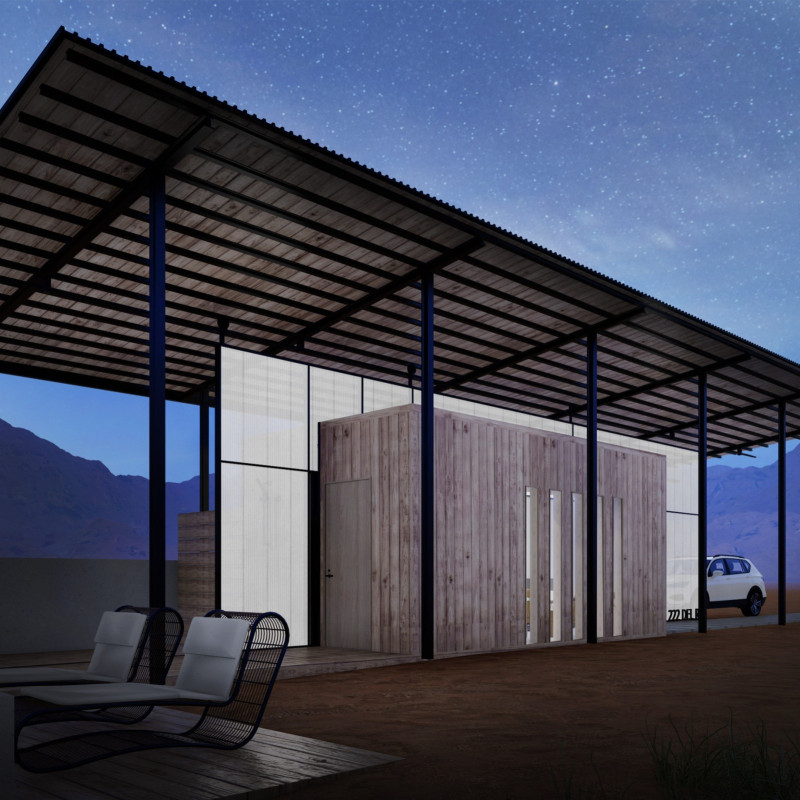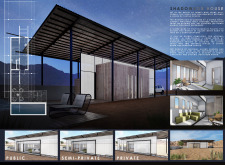5 key facts about this project
The overall design approach features a rectangular form elevated under a metal canopy that provides shade and structural support. The use of polycarbonate plastic for external facades allows for natural light penetration while minimizing heat absorption, creating an environment that is bright yet temperate. This choice of material supports the residence's energy efficiency, in alignment with modern ecological considerations.
The internal spatial organization of the Shadowbox House accommodates various functions. It includes distinct zones for social interaction, transition, and privacy. This flexibility allows the homeowners to configure the space according to different needs, promoting both community engagement and personal solitude. The wooden core structure contrasts with the external materials, enhancing the sensory experience of the interior.
A significant aspect of the Shadowbox House is its ability to adapt to its surrounding landscape while providing unique living experiences. The design utilizes the local climate to regulate temperature naturally, thereby reducing reliance on mechanical heating and cooling systems. The transparency offered by the polycarbonate facades fosters a connection between the interiors and the external environment, allowing the residents to experience changes in light throughout the day.
The integration of tactile materials, including plaster and concrete, within the interior spaces reinforces a minimalist design philosophy. These choices contribute to an understated elegance and are practical in terms of maintenance and longevity. The overall design promotes a harmonious balance between functionality and aesthetic appeal, marking a notable advancement in residential architecture.
For a comprehensive understanding of the Shadowbox House, consider exploring the architectural plans, sections, and design concepts that elucidate its unique approaches. By reviewing these elements, readers can gain deeper insights into the architectural ideas that define this project.























